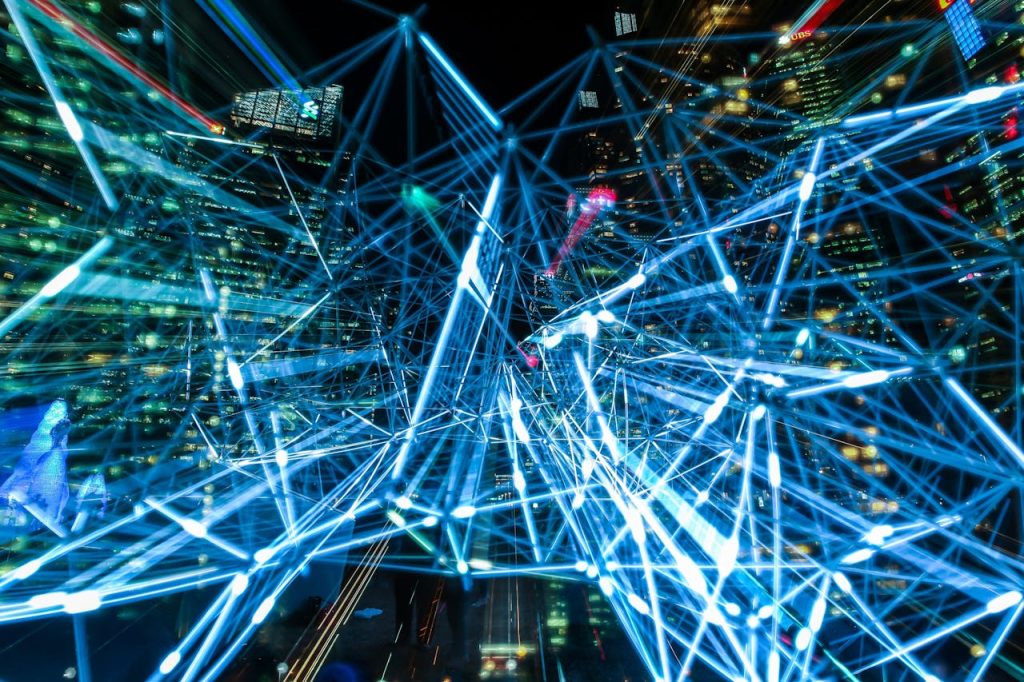The roots of artificial intelligence go back decades, paralleling the development of the earliest computers. The steady rise of computing power and a corresponding decline in its cost have, in recent years, made AI a compelling proposition in many fields.
The use of AI in law enforcement is controversial in some circles, but both specialized single-purpose products and general-purpose “generative AI” offerings such as Claude and ChatGPT hold great promise as law enforcement tools. We named AI as a top trend for 2025 emerging in law enforcement circles. In this post, we’ll justify that pick with a look at some of the standout use cases for AI applications in the law enforcement environment.
AI in Law Enforcement
Humans are remarkably capable general-purpose processors of information. We’re capable of direct observation, inductive and deductive reasoning, prediction, and extrapolation from a limited base of data. All of those things are meaningful in policing. However, we’re also prone to fatigue and errors, and can only operate at our peak mental acuity for short stretches of time.
AI tools lack humans’ broad flexibility but can be remarkably good at applying human-like analytic abilities to data or extracting pertinent information from large and poorly organized datasets. More importantly, they work quickly and are available 24/7 once deployed and brought online.
Most of the law enforcement tools built on AI (“Police AI,” if you will) address tasks that would be difficult or impossible for humans to do effectively or within a reasonable timeframe, or automate time-consuming tasks that would otherwise reduce the productivity of law enforcement personnel. A representative (though non-comprehensive) collection of use cases might include:
Reporting and Transcription
General-purpose AI products can be harnessed for the creation of reports, and the transcription of interviews or footage from bodycams or other data sources. These tools are already in use within LEAs across the country. That said, the practice remains somewhat controversial with the public, and police agency administrators have expressed concerns about the accuracy and quality of the resulting reports.
Nevertheless, these are the types of tasks that absorb much of a peace officer’s time — time which might more constructively be spent on other duties. While the usefulness of AI in this context is unquestionable, administrators must take care to lay down policies, “best practices,” and guidelines for the use of AI in reporting. Errors, inaccuracies, or biases in the underlying AI model can undermine an investigation, and potentially cause cases to be thrown out before or during trial.

Redaction of Audio and Video
Members of the public place a high value on transparency and accountability from their policing agencies. Often, especially in the wake of highly charged interactions between police officers and members of disenfranchised communities, this takes the form of releasing audio and video recordings of the incident. These may come from police bodycams or dashcams, surveillance video, wiretaps, radio communications, or witness videos submitted by tipsters or posted on social media.
Redacting audio and video to protect the identity of participants or witnesses, or to suppress information that might need to be brought out at trial to avoid prejudicing a jury, is an important task that promotes transparency but is time- and labor-intensive when conducted by humans. AI excels at such tasks and can carry them out quickly and at volume.
Identifying Persons of Interest
The proliferation of public, private, and citizen-owned security cameras, as well as cell phone videos and photos taken at the scene of crimes and disturbances, can often be used to identify persons involved or present at the scene. A high-profile example was the 2011 Stanley Cup riot in Vancouver, Canada, which yielded approximately 5500 hours of video evidence and over 29,000 photos; and ultimately resulted in 293 convictions, one acquittal, and six cases dropped by the prosecutors. At that time the only lab capable of reviewing that volume of video data within a reasonable timeframe was the International Law Enforcement and Emergency Services Video Association (LEVA) in Indiana, which required over 50 staff and 4,000 hours for the task.
Today, AI-driven tools can review similar volumes of data in a matter of hours, with minimal need for staffing. Matches between figures in a video and known offenders, or previously unknown members of the public, should be treated as provisional until they can be confirmed through other sources, but this kind of video search represents a major tool for law enforcement. Where a tentative identification can be substantiated through other sources, other tools such as cell phone location data can then be drawn upon to make a prosecution-worthy case.
Searching Unstructured Data
The trend of living life largely online has generated huge quantities of data about almost every US resident. Private companies harvest online behaviors and browser histories, retailers track preferences and locations, and individuals voluntarily post startlingly unguarded details of their lives on social media. LEAs are frequently in a position to simply purchase data on the open market that would previously have required a warrant; a situation which may eventually face a 4th Amendment challenge, but which – until such time as that happens – provides a significant source of potential intelligence for law enforcement.
Not all such data can be purchased in a neat and structured package. Much of it, especially social media intelligence (SOCMINT), garnered through the use of tools such as Spokeo for Law Enforcement, arrives unstructured and unformatted as a large mass of text, photos, and videos. As with video evidence, reviewing such amorphous information manually is impractical due to the time and labor involved.
AI-driven tools make that data usable by generating on-demand summaries, or by sifting months’ accumulation of raw data in just seconds to locate actionable intel in the form of keywords, phrases, mentions of specific names, or any similar data point specified by the investigators.

Detecting Large-Scale Patterns in Source Data
The pan-jurisdictional nature of much contemporary crime can pose a challenge for LEAs, especially those in smaller population centers and/or with limited resources. Crimes occurring within your jurisdiction could appear to be isolated incidents, but may, in reality, be part of a larger picture of similar offenses orchestrated in multiple jurisdictions by a larger crime ring. Many partner agencies at the municipal, state, or federal level contribute to shared law enforcement databases, making it possible to connect the dots across jurisdictions, but – again – reviewing huge quantities of data in a timely fashion is not possible manually.
AI-driven analytics tools can be utilized to process this kind of big data and identify patterns that would not otherwise be visible to ground-level investigators. These patterns, once identified, can then be shared between cooperating LEAs to track down and identify those responsible. This kind of AI can be especially valuable in challenging investigations addressing widespread fraud rings, gang-related crime and violence, money laundering (especially challenging when it’s in the form of cryptocurrency), ransomware, and “swatting,” cyberstalking, or online harassment.
There is No “Police AI” Without Data
AI tools harness a variety of technologies to do what they do, but the use of AI in law enforcement ultimately depends less on the underlying technology and more on the quality of data it’s given to operate upon. An AI analysis tool without adequate data cannot reliably perform its assigned tasks, any more than human investigators can.
LEAs planning to integrate AI tools into their workflows must also, then, plan on the use of supplemental data and intelligence sources to supply them with pertinent data. Spokeo for Law Enforcement is exactly that kind of data and intelligence source. Its thousands of sources and billions of data points, encompassing regulated, public, and social media data, bridge the gaps in data sources commonly used within the law enforcement community. When armed with the fuller and broader information available through the use of Spokeo, most AI tools can be made more effective and more useful.
To learn more about the use of Spokeo in law enforcement and how it complements AI, reach out to our team through the contact information on our Law Enforcement page. They’ll be happy to answer your questions, arrange a product demonstration, or arrange a no-cost trial of the product on your own site.
Sources
IBM: The History of AI
Associated Press: Police Officers are Starting to Use AI Chatbots to Write Crime Reports. Will They Hold Up in Court?
Lexipol: AI in Law Enforcement: Old and New ChallengesBritish Columbia Prosecution Service: Report On the 2011 Vancouver Stanley Cup Riot Prosecutions
